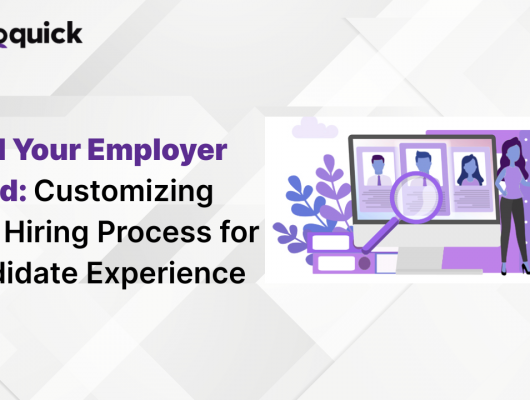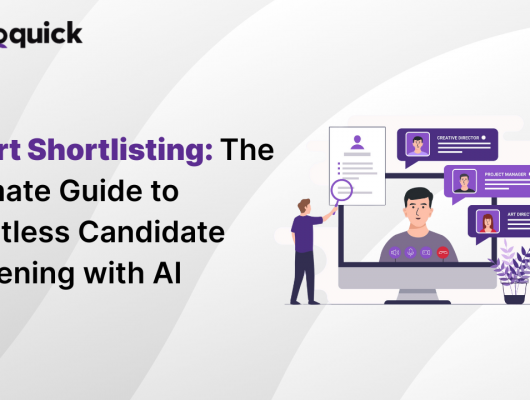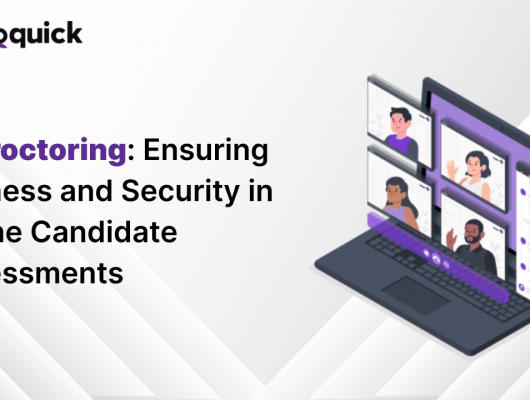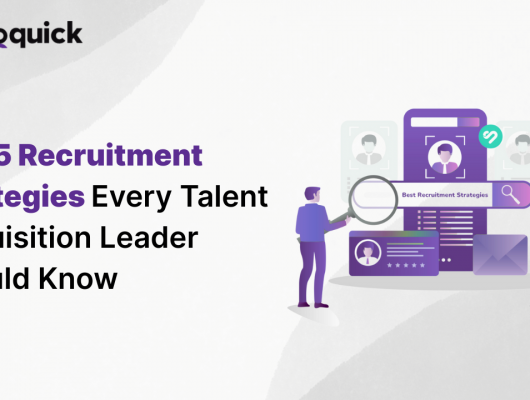You know, in today’s world, finding great people for your team is tough. And honestly, a surprisingly large number of job seekers – something like 60% actually – report having a less-than-great experience when applying for jobs. That number is pretty staggering, right? It’s more than just a bad feeling; it really does hurt how candidates see your company, and it might even push fantastic potential employees away.
Think about candidate experience like this: it’s basically the whole journey a job seeker takes with your company. It starts from the moment they first look you up, goes through the application process, interviews, and maybe even into onboarding. It’s all about how you treat them, showing respect, and the lasting impression you leave, whether they get the offer or not.
Having a positive candidate experience, well, that’s absolutely crucial. It builds your reputation as an employer, helps you attract higher-quality applicants, can actually cut down on your hiring costs, and gives you those good reviews on sites like Glassdoor.
But trying to deliver that consistently positive experience, especially when you’re hiring at any kind of scale? That’s genuinely hard. There are just so many manual tasks, communication can be slow, and it’s tough to really personalize things for everyone. Thankfully, though, AI-powered recruitment tools are starting to change things pretty dramatically.
This post is going to dive into how AI, specifically, can make the candidate experience so much better at every step. We’ll look at why it’s become essential for modern hiring and maybe touch on how you can really make these tools work for you.
1. Why Candidate Experience is Your Most Powerful Recruitment Asset
You know, bad news travels fast. A negative candidate experience can seriously damage your employer brand, spreading pretty quickly and potentially turning away those potential star employees you really want. Let’s face it, high-quality candidates usually have options, right? Giving them a poor experience is, frankly, a pretty sure way to lose them to someone else.
Think about it for a minute:
- Your Employer Brand takes a hit. Those negative reviews on Glassdoor or social media? People see those, and it can definitely make future applicants think twice.
- When you’re trying to Attract Top Talent, they expect a process that feels smooth and respectful. It’s kind of non-negotiable for them now.
- There’s a real Business ROI here, too. Better candidate experience tends to lead to more offers being accepted, faster hiring times, and sometimes even helps keep employees around longer once they’re hired.
- And in a tight job market, having a superior Competitive Advantage is huge. It really can set you apart from other companies vying for the same people.
Investing in a great candidate experience isn’t just, you know, about being nice (though that’s important!). It’s actually a really strategic move that impacts your business’s bottom line. Seriously, making candidate experience a higher priority is just smart because, let’s be honest, not doing so can definitely slow down how quickly you can bring new people onto your team.
2. The Old Way: Identifying the Candidate Experience Bottlenecks AI Solves
Traditional recruitment methods often hit roadblocks that end up making the candidate experience… well, not great. These frustrating points are pretty common.
Think about some of these pain points:
- Slow Communication: Waiting ages for a response or getting no updates at all. It just leaves candidates totally in the dark, doesn’t it?
- Generic Interactions: Getting those impersonal mass emails where you feel like just another number. It’s not exactly inspiring.
- Tedious Application Processes: Filling out long, repetitive forms online. We’ve probably all been there, and it’s just plain frustrating.
- Scheduling Nightmares: The endless back-and-forth emails trying to find a time that works for everyone to interview. It’s a hassle for candidates and recruiters alike.
- Lack of Feedback: Applying and interviewing, then just… hearing nothing. Candidates are left wondering what happened, and it’s not a great feeling.
- Administrative Burden on Recruiters: Recruiters spend way too much time on repetitive, manual stuff instead of actually connecting with people.
These bottlenecks, they don’t just frustrate the candidates. They also really tie up recruiters, preventing them from focusing on building real engagement. This is where recruitment automation starts to make a difference, helping recruiters free up time to genuinely enhance that candidate experience.
3. Enter AI: What AI-Powered Recruitment Tools Actually Are
Okay, so “AI in recruitment” might sound like a bit of a buzzword sometimes, but it really does represent a significant shift in how companies find and hire talent. At its core, AI here uses things like machine learning, natural language processing, and automation to essentially streamline and improve various parts of the hiring process.
We can sort of group these AI tools into a few categories:
- There are Sourcing & Screening Tools that help you find and initially filter potential candidates.
- Then you have Communication & Engagement Tools which are great for automating and also personalizing how you talk to candidates.
- Scheduling Tools pretty much do what they say – they simplify and automate getting those interviews booked.
- And finally, Analytics & Predictive Tools can give you data-driven insights, which is super helpful for improving your overall recruitment strategy.
Really, AI fundamentally changes the interaction side of things by making it quicker and more personalized. It also boosts efficiency by handling all those repetitive tasks. It feels like AI in recruitment is genuinely where things are heading, and it seems pretty clear it will greatly enhance the process for everyone involved.
4. AI in Action: Enhancing Candidate Experience Across the Recruitment Journey
AI really can make a big difference for candidates at every single stage of the recruitment journey.
Discovery & Application Phase:
- Personalized Job Recommendations: AI looks at someone’s profile and what they’ve been browsing to suggest jobs they might actually be interested in. It feels more relevant.
- AI Chatbots for Instant FAQs: Got a question? Chatbots can often jump in anytime, 24/7, to answer those common things immediately. It’s much faster than waiting for an email.
- Streamlined Application Processes: This is a big one. AI can help pre-fill information or cut down on repetitive questions, just making the whole application quicker and maybe a little less painful.
- Immediate Application Confirmation: Just submitting feels better when you get an instant note back confirming it was received. It takes away that little bit of worry.
Screening & Assessment Phase:
- Faster Resume Analysis: Instead of a human sifting through hundreds slowly, AI can quickly scan resumes and provide initial feedback, really speeding up that first screening step.
- AI-Powered Assessments: These can use structured and potentially fairer evaluations to check out candidates’ skills and qualifications more objectively.
- Automated Communication on Status Updates: Keeping candidates in the loop about where their application stands? AI can handle those regular updates automatically.
Interview & Evaluation Phase:
- Automated, Flexible Interview Scheduling: This is brilliant for avoiding that email back-and-forth. It offers options that work with people’s calendars and sends reminders automatically.
- AI Analysis of Video Interviews: AI can look at certain objective factors in video interviews and help speed up getting feedback, focusing perhaps less on subjective impressions.
- Timely Communication Before and After Interviews: Getting clear instructions beforehand and a follow-up afterward just feels more organized and respectful.
Offer & Onboarding Phase:
- Smooth Offer Process: Making the offer step clear and easy, maybe using digital signatures? That’s just a hassle-free experience.
- Automated Pre-Boarding Communications: Keeping candidates engaged after they’ve accepted the offer with some automated messages? It helps them feel connected before day one.
- Respectful Rejection Communication: Delivering rejection notices can be tough, but AI can help ensure they are personalized and feel more empathetic, which is so important.
Post-Hire & Feedback:
- Gathering Candidate Feedback: Want to know how you did? AI can help collect feedback through surveys and even analyze the sentiment in responses.
- Using Data for Continuous Improvement: Taking all that data and feedback to figure out where you can make the recruitment process even better? AI helps identify those areas.
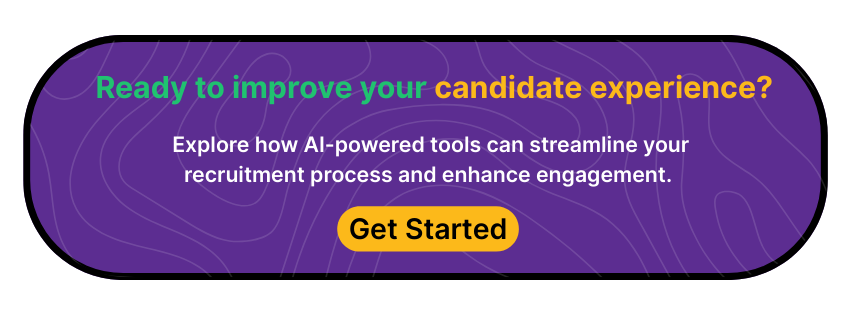
5. Key AI Features That Drive Superior Candidate Engagement
There are definitely a few standout AI features that seem particularly good at keeping candidates engaged and making the process feel better for them.
Intelligent Chatbots:
These are fantastic because they can give instant answers to candidate questions. They can also handle basic queries and, as we mentioned, they’re available 24/7, which is super convenient for job seekers applying at different times.
Automated Personalized Communication:
This isn’t just sending out mass emails. AI uses dynamic templates to send messages that are triggered by what’s happening with that specific candidate. It feels much more tailored to them personally.
Automated Scheduling Engines:
These are real time-savers. They integrate with calendars, offer candidates flexible time slots to choose from, and automatically send out reminders, which is helpful for everyone.
AI-Powered Screening & Ranking:
These tools can help ensure a degree of fairness and speed in the initial screening. They’re designed to highlight the best potential matches quickly.
Sentiment Analysis:
This feature is pretty cool; it tries to understand the candidate’s mood or tone from their interactions. It can help identify if someone is getting frustrated or where there might be pain points in the process.
Predictive Analytics:
This is about looking at the data to spot candidates who might be likely to drop out of the process. Knowing this allows recruiters to proactively reach out and re-engage them.
6. Implementing AI for Enhanced CX: A Practical Guide
Okay, so actually putting AI into practice to make candidate experience better requires a bit of a plan. It’s not just flipping a switch, right?
Assess Your Current Candidate Journey:
Start by looking closely at how candidates experience things now. Where are the touchpoints, and honestly, where are the pain points?
Define Your CX Goals with AI:
Set specific, measurable objectives.
Choose the Right AI-Powered Platform:
There are lots of tools out there. You need to select a platform or tools that genuinely fit with the specific candidate experience goals you’ve set.
Integrate with Existing Systems:
Ideally, you want these new AI tools to work smoothly with what you already have, like your Applicant Tracking System (ATS) and HR Information System (HRIS).
Train Your Team:
Your recruiters need to know how to use these tools effectively. Make sure they’re comfortable leveraging the AI to help them, not feel replaced by it.
Communicate with Candidates:
This is important: explain why you’re using these tools. Let candidates know it’s intended to make the process faster and communication better for them. Transparency helps!
Pilot and Scale:
Maybe start small, test it out, measure the results to see what’s working, and then, if it’s successful, start expanding it.
Here is a table to summarize the steps we just talked about:
| Step | Description |
|---|---|
| Assess Current Journey | Identify pain points and areas for improvement. |
| Define CX Goals | Set specific, measurable objectives. |
| Choose Right Platform | Select tools aligning with your goals. |
| Integrate with Systems | Connect AI with your ATS and HRIS. |
| Train Your Team | Prepare recruiters to use AI tools. |
| Communicate with Candidates | Explain the benefits of AI to candidates. |
| Pilot and Scale | Start small, measure, and expand based on success. |
7. Measuring the Success: KPIs for AI-Driven Candidate Experience
Okay, so once you’ve implemented AI, how do you actually know if it’s making a difference? Measuring success is crucial for proving the value and spotting where you can make things even better down the line. Here are some key things, some KPIs, you might want to keep an eye on:
- Candidate Satisfaction Scores (CSAT) or Net Promoter Score (NPS): This pretty directly measures how happy candidates were with the whole process.
- Application Completion Rate: Are more people finishing the application once they start? This tells you if the process feels easier.
- Candidate Drop-off Points & Rates: Where are candidates leaving the process? AI might help you identify these points and hopefully reduce them.
- Time-to-Hire & Time-to-Communicate: Are things moving faster? How quickly are you getting back to people?
- Offer Acceptance Rate: If your candidate experience is great, you might see more people saying “yes” to your offers.
- Glassdoor/Employer Review Ratings: Are the reviews about the hiring process starting to look more positive?
- Recruiter Efficiency Gains: Is the AI actually helping your recruiters save time on admin stuff so they can do more valuable work?
8. Addressing Concerns: Bias, Privacy, and the Human Touch
Now, while AI offers some fantastic benefits, it’s only right to talk about some potential concerns people have.
- Bias Mitigation: This is a big one. Properly designed AI can actually help reduce some of the human bias that might unintentionally creep into hiring decisions by focusing on structured data and more objective criteria.
- Data Privacy: Naturally, handling candidate data means you have to be really careful. You need to emphasize compliance with regulations like GDPR, CCPA, and just generally having secure data handling practices.
- Maintaining the Human Element: This is perhaps one of the most common worries, isn’t it? The goal here is that AI should augment, it shouldn’t replace, recruiters. It should free them up from the repetitive tasks so they can focus on those really high-value interactions and building rapport with candidates.
9. The Future of Candidate Experience is AI-Powered
It really does seem like the future of candidate experience will definitely involve AI. We’re already seeing trends towards things like hyper-personalization, maybe even VR interviews down the road, and just continued automation where it makes sense. AI is really becoming an integral part of creating a candidate experience that’s competitive in today’s market.
Conclusion
So, candidate experience is absolutely paramount in today’s talent landscape. And AI, it really does offer some powerful ways to tackle those key challenges we talked about. By bringing AI into the picture, you really can streamline processes, make interactions more engaging, strengthen how people see your company as an employer, and ultimately, probably make better hires overall. It feels like AI isn’t just about the technology itself; it’s a tool that helps you build better relationships with the people who might one day join your team. Ready to explore how AI could perhaps make that difference for you? Thinking about a modern platform might be a good next step to really elevate your candidate experience.
FAQs
Q: What is AI in recruitment?
A: AI in recruitment uses technologies like machine learning and natural language processing to automate and improve hiring processes, making them faster and more efficient.
Q: How does AI improve the candidate experience?
A: AI personalizes communication, provides instant support, streamlines application processes, and offers timely feedback, creating a more positive candidate journey.
Q: Is AI recruitment biased?
A: Well-designed AI systems can reduce human bias by using structured data and objective criteria for screening and assessment.
Q: Does using AI mean less human interaction?
A: No, AI tools augment recruiters, freeing them from repetitive tasks and allowing them to focus on more meaningful candidate interactions and strategic tasks.
Q: What are the key benefits of using AI in recruitment?
A: The main benefits include faster time-to-hire, improved candidate engagement, reduced administrative burden, and enhanced employer branding.

